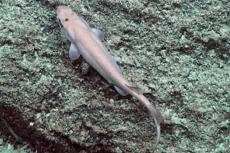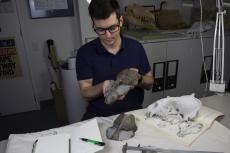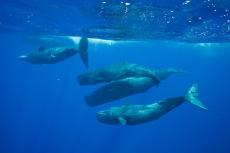Discovery of seal fossils leads to new revelations
The discovery of the fossils of an extinct monk seal species has shed new light into how seals had evolved around the world.
The discovery of the extinct monk seal species came about after an international team of biologists examined seven fossil specimens (including a complete skull) found on south Taranaki beaches in New Zealand between 2009 and 2016.
Named Eomonachus belegaerensis, the new species was about 2.5m long and weighed around 200 to 250kg. It is believed to have lived in the waters around New Zealand three million years ago.
Prior to the discovery, it was believed that all true seals originated in the North Atlantic, with some crossing the equator southwards to Antarctica. This new discovery, however, shows that many ancient seals (including the ancestors of our present-day monk, elephant and Antarctic seals) had evolved in the Southern Hemisphere.
Palaeontologist James Rule, a PhD candidate at the Monash Biomedicine Discovery Institute (Monash University), explained, “Until now, we thought that all true seals originated in the Northern Hemisphere, and then crossed the equator just once or twice during their entire evolutionary history. Instead, many of them appear to have evolved in the southern Pacific, and then criss-crossed the equator up to eight times."
“This new species of extinct monk seal is the first of its kind from the Southern Hemisphere. Its discovery really turns seal evolution on its head,” said Rule.
The paper detailing the findings was recently published in the Proceedings of the Royal Society.
Te Papa Museum of New Zealand curator of marine mammals and study collaborator Dr Felix Marx said that the discovery was a triumph for citizen science, as all the seven fossils that led to the discovery had been found by members of the public.
- Log in to post comments










































